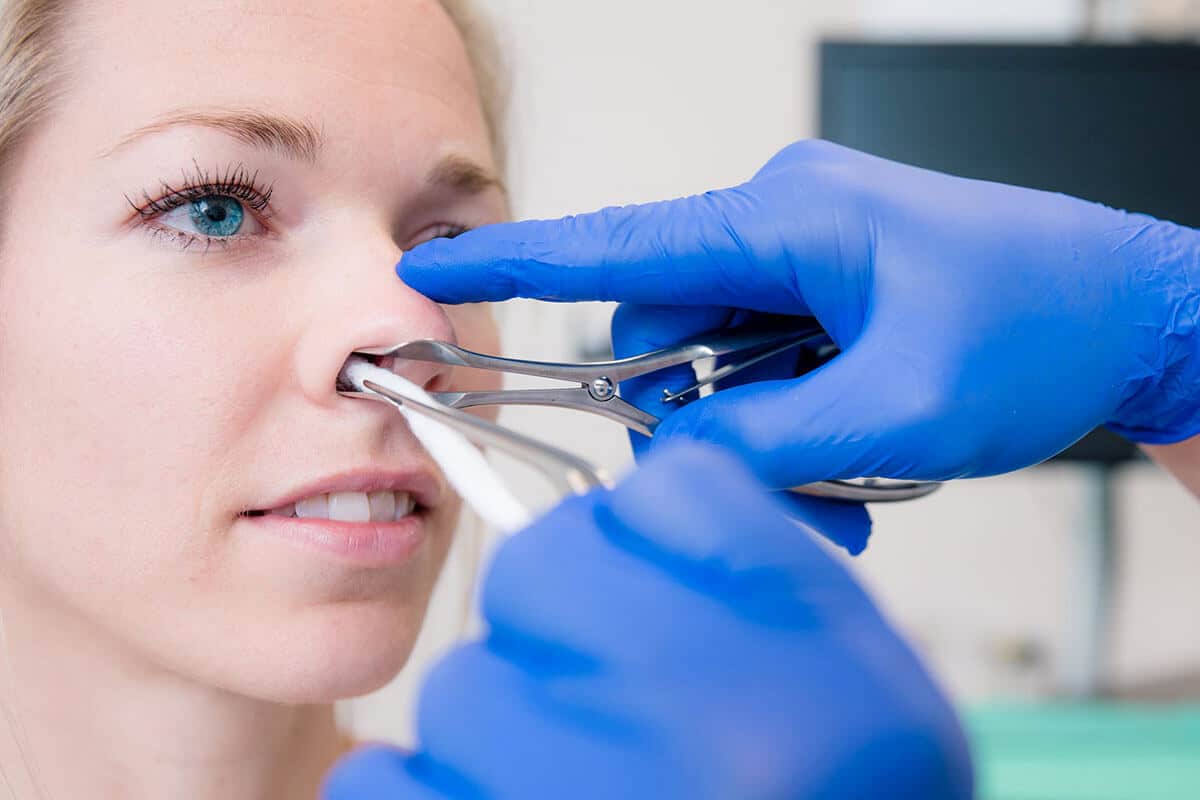Deviated septae reduce the space available for passage through one or both nasal passages, potentially leading to congestion or sinus pressure issues.
Though nasal sprays may help alleviate symptoms, to correct a crooked septum requires surgery – though septoplasty is typically covered by health insurance plans and typically takes only a couple hours of recovery time.
Procedure
Septoplasty procedures typically last around an hour under general anesthesia. The surgeon makes a small cut inside one side of the nasal wall and lifts up mucus membrane to expose the septum. Any cartilage and bone that contribute to deviation are then trimmed, realigned or removed as necessary, with spreader grafts (reinforcing strips of cartilage). If necessary, reconstructive spreader grafts (small reinforcing strips of cartilage) used as reinforcement to reconstruct it if necessary.
The surgeon then stitches together and closes up the incisions on your nose, using silastic splints as necessary to provide support while it heals.
Before the procedure, your doctor will ask about your medical history and take pictures of your nose from various angles. Be sure to inform them about all medications (including herbal and supplement products) taken, as well as any that affect blood clotting such as aspirin or ibuprofen that might interfere with clotting processes.
Recovery
Medication and other therapies may provide temporary relief from symptoms caused by a deviated septum, but they don’t address its cause: an improperly aligned septum.
Septoplasty surgery entails trimming and repositioning bone and cartilage to make the nose more vertical, usually through nostrils but it may sometimes require making an incision between them; when performing this operation, care must be taken not to disrupt keystone area which supports nasal dorsum.
Resting is the key to speedy recovery for patients suffering from TBI or SCI, whether that means sleeping more or using pillows to prop up your head. Furthermore, it may help if medications such as aspirin, ibuprofen and acetaminophen which increase bleeding are avoided; vigorous exercises must wait until clearance from a healthcare professional.
Pain
Straighten your crooked septum during this outpatient procedure under anesthesia for maximum comfort and safety. It typically lasts around an hour; during which the doctor may trim, remove or adjust pieces of the septum before inserting soft silicone splints inside your nose to support it; the incision is closed with dissolvable sutures before the nasal mucosa reattaches itself.
After surgery, patients typically experience minimal pain that can usually be managed using over-the-counter pain relievers such as Tylenol or Ibuprofen. Some opt to get minor cosmetic rhinoplasty surgery at the same time to alter its shape while also receiving a turbinate reduction procedure to alleviate allergy-related sinus pressure and congestion.
Medications
Once your septum has been repaired, you should notice less discomfort, swelling and congestion. Within a week of surgery, breathing should return to normal again while also offering relief from symptoms that led to seeking medical help in the first place.
Your NYU Langone otolaryngologist (ear, nose and throat doctor) may suggest over-the-counter nasal rinses or decongestants as a solution to ease breathing issues, while corticosteroid nasal sprays could also be prescribed to reduce inflammation in your nasal passages.
Surgery alone cannot correct a deviated septum; it cannot treat allergies and asthma which cause breathing issues and congestion, however. If symptoms continue to bother you, speak to your otolaryngologist about using at-home treatments; otherwise if these issues significantly hinder quality of life consider surgical correction as well.
Schedule an Appointment
The nasal septum is the thin wall that separates right and left nostrils, often featuring minor deviations without resulting in symptoms or breathing impairment. More serious deviations, however, could hinder breathing as well as lead to sinus infections or nosebleeds – something even minor deviations don’t typically lead to.
Patients seeking diagnosis and treatment for their crooked septum can consult primary care doctors or ear, nose and throat (ENT) specialists. If the symptoms of their condition are mild enough, medication may provide relief while surgery may not be required.
If medications fail to do the trick, septoplasty – which reshapes the nasal septum – may be required. As part of more comprehensive treatments, turbinate reduction – which reduces the size of turbinates to improve airflow through nasal passages – is frequently performed simultaneously with septoplasty surgery; during which, internal splints and soft packing material will be placed inside your nose for support purposes during surgery.
Disclaimer: The content on this blog is intended for general informational purposes only. It is not a substitute for professional medical advice, diagnosis, or treatment. Always consult qualified healthcare providers for personalized advice. Information regarding plastic surgery, dental treatment, hair transplant, and other medical procedures is educational and not a guarantee of results. We do not assume liability for actions taken based on blog content. Medical knowledge evolves; verify information and consult professionals. External links do not imply endorsement. By using this blog, you agree to these terms.










